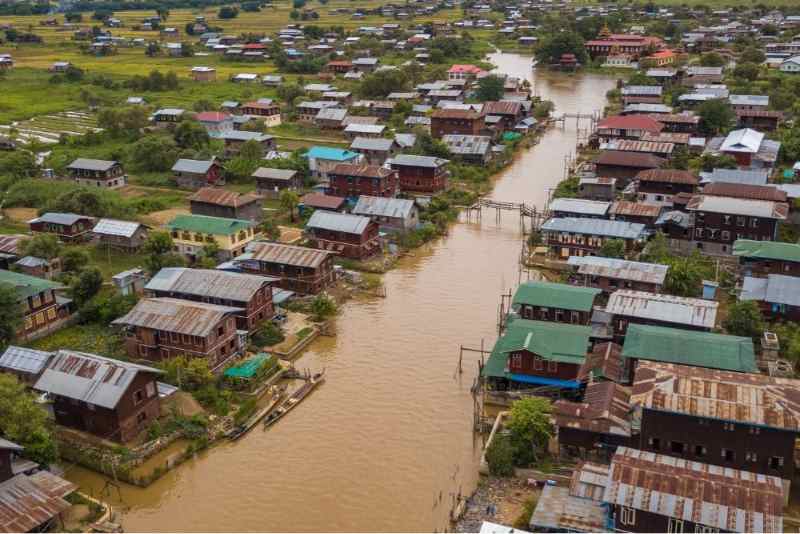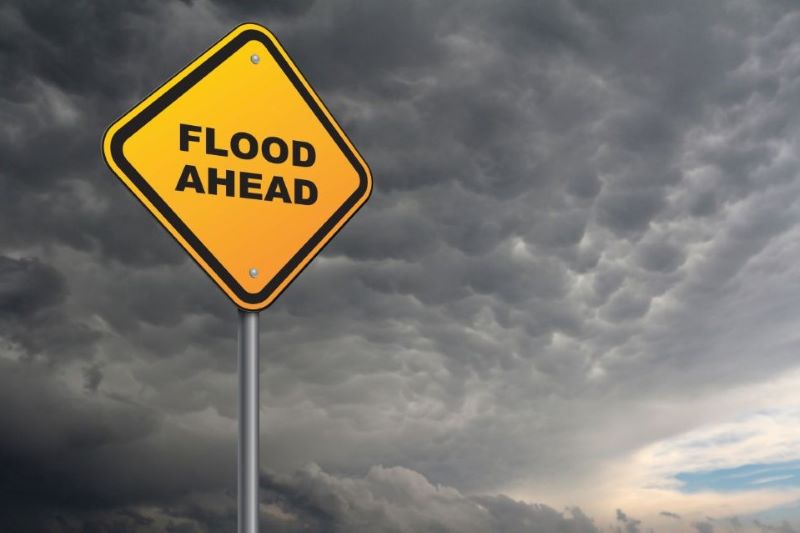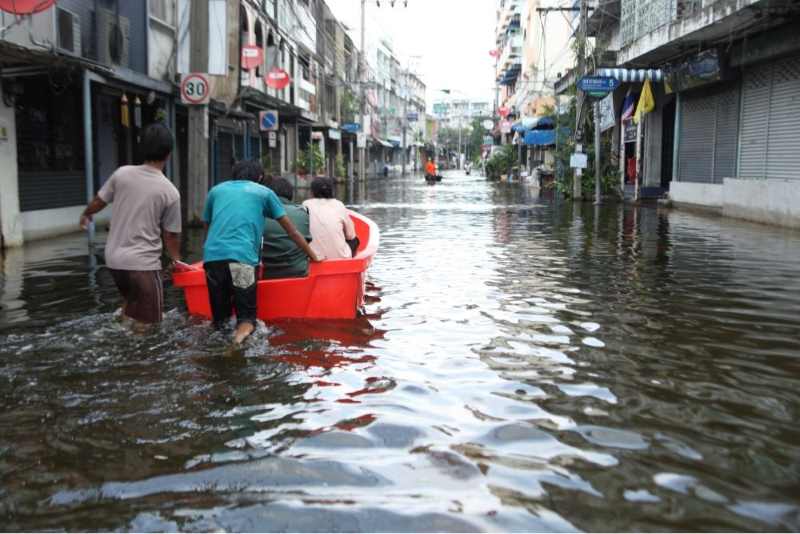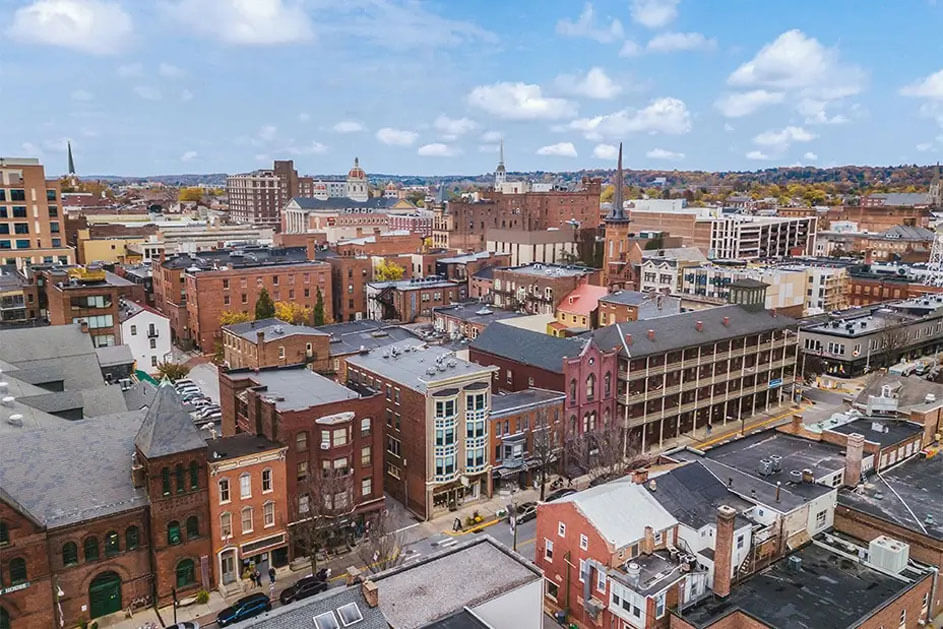Flooding is not unusual in York PA. Heavy rains or tropical cyclone wreckage can cause flooding along streams and rivers. But along streams, creeks, and rivers, some of the floods set the worst history.
These are the four history of worst floods in York PA.
List: History of Worst Floods in York PA

June 1972 – Hurricane Agnes
The aftermath of Hurricane Agnes caused almost seven inches of rain to fall on the whole state between June 21 and 22, 1972. The city of York, which is practically divided in half by the Codorus Creek, received 13.50 inches of rain in a single day, according to the National Weather Service (NWS).
With this much rainfall, all of the state’s main waterways would face record-breaking floods. The Susquehanna River in Harrisburg reported a record crest of 33.27 feet. The river in Wilkes-Barre damaged both of the cities severely, cresting 40.9 feet.
A total of 48 individuals died in PA as a result of this disaster, and about $3 billion worth of damages were incurred.
May 1889 – Johnstown Flood
Johnstown is an urban area situated 60 miles east of Pittsburgh where the disaster happened. It was May 31, 1889, when the South Fork Dam collapsed.
History.com reports that the continuous rain that poured the day prior caused this disaster. The dam’s spillway grew blocked with debris and was unusable. Also, according to them an engineer rode a horse to the settlement of South Fork and warned the residents of the approaching disaster. But the warning never reached Johnstown because the telegraph cables were down.
At 3:10 p.m., the dam broke. … everything was swept away as water surged into the town at 40 miles per hour. The town took five years to restore after the flood claimed its population of almost 2,000 residents.
January 1996 – Northeast Floods
In 1996, winter storms dropped record amounts of snow on a large portion of the state. However, on January 19, there was a drastic change in the temperature, comparable to an intense January Thaw. As the temperature increased into the 50s and 60s, three inches of rain poured.
The heavy rain induced snowmelt, which poured a lot of water into frozen rivers and streams – according to the NWS. This resulted in the formation of ice jams and water backing up into settlements along the Susquehanna River. The river crested at its greatest level since Agnes at Harrisburg’s main stem. There was severe ice jam flooding throughout the entire area, including multiple significant ice jams close to Harrisburg.
The bridge over Walnut Street collapsed due to one blockage.
September 2011 – Tropical Storm Lee
Pennsylvania experienced yet another severe flooding incident on September 7–8, 2011.
The Swatara Creek in Hershey experienced flooding in the Midstate, surpassing its previous record flood stage by more than 10 feet. The Hersheypark and the surrounding areas were submerged underwater.
The NWS reports that buildings along the waterfront in Harrisburg were flooded up to the second level as a result of the Susquehanna River once again.
The river in Wilkes-Barre surpassed its record by about 2 feet, measuring 42.66 feet, following 10 to 15 inches of rainfall in the area.
Flooding Safety Advice To Prevent Repeating History Of Worst Floods In York PA

Your chances of surviving and better protecting your property can be strengthened by being aware of what to do before, during, and after a flood.
- Establish an emergency plan before the issuance of an evacuation order.
- Discuss your plans with your neighbours and urge them to leave as soon as possible.
- Refrain from driving or strolling across floodwaters.
- Take urgent action to higher ground if there is a possibility of flash floods.
- Turn on the radio or TV to get the most recent information on the weather as well as emergency protocols.
- Unplug electrical devices and avoid handling electrical components.
Before The Flood
- Assess whether the place of employment or your residence is downstream from a dam and find out more about the risk of flooding in your neighbourhood.
- Check if your property and valuables are secure.
- Ensure that all slopes are maintained safely. Soil gains solidity from the roots.
- Get your property ready for floods.
- Identify whether the location where your property is located is high-risk or prone to flooding.
- Invest in flood insurance.
- Listen to alerts, warnings, and public safety information.
- Make a sandbag plan. If you need sandbags, go to your neighbourhood fire station.
- Plan to evacuate swiftly to higher terrain if needed.
- Prepare and go review your family’s emergency plan.
- Put together a survival pack.
- Regularly maintain the house’s gutters and drains clean.
- Take pictures or videos of your property to document it. Put these records in a secured location.
- You should be ready to leave if you live or work in a flood zone, a hurricane evacuation zone, or an area that frequently floods.
During The Flood
- Examine your driveway and home’s drainage systems.
- Maintain drainage to minimize mudslides.
- Refrain from crossing streams with fast currents.
After The Flood
- If the area is unsafe, avoid going back to your flood-damaged property.
- Inspect houses and hillsides for damage.
- Sandbags could be useful in rerouting floodwaters (unless there is a severe debris flow).

· Take extra caution when driving since many roads may have washed-out sections, holes, and debris from mud.


